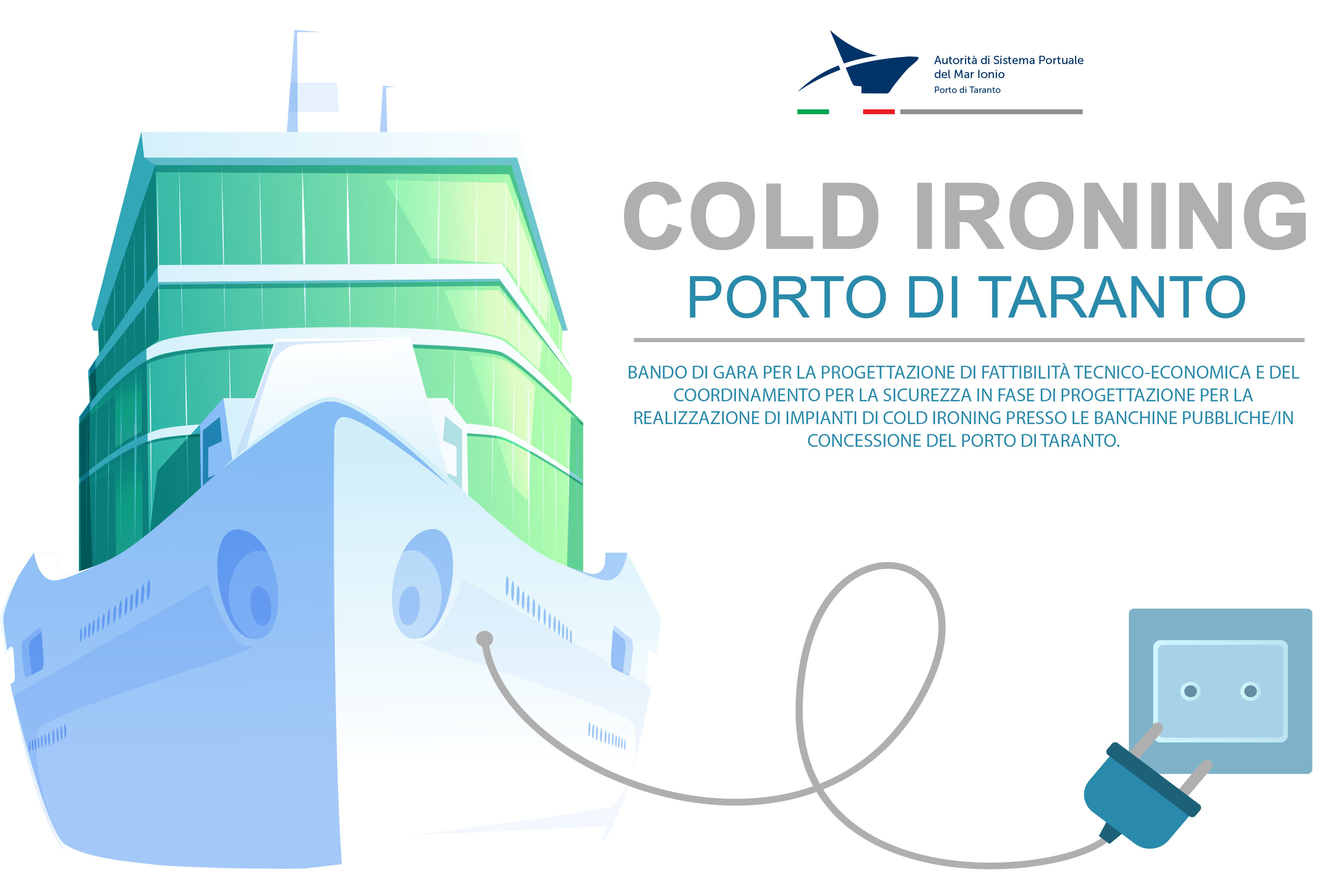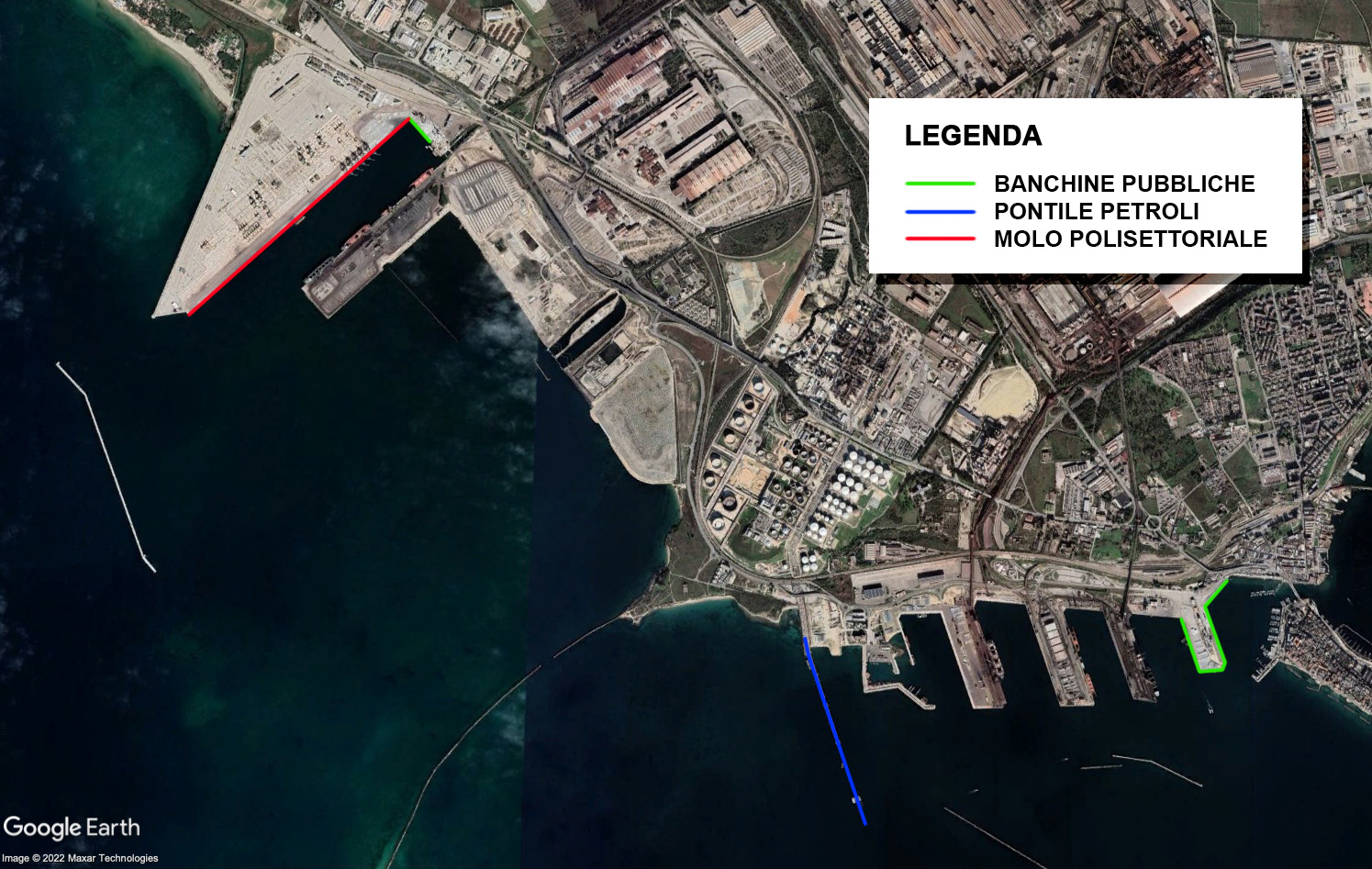
PORT OF TARANTO, 04 JULY 2022 - A call for tender for the design of three cold ironing systems at the AdSP of the Ionian Sea - Port of Taranto (AdSPMI) public/concession docks was published last Friday, 1 July.
In compliance with the provisions of the National Recovery and Resilience Plan (NRRP) - Complementary Fund Leg. Decree no. 59/2021, the purpose of the call is to draft an articulated feasibility study, in accordance with the Guidelines implemented by the Italian Ministry of Infrastructure and Sustainable Mobility (Ministero delle Infrastrutture e della Mobilità Sostenibili - MIMS) and the Italian Superior Council of Public Works (Consiglio Superiore dei Lavori Pubblici), to be used as a basis for awarding NRRP and Complementary National Plan (Piano Nazionale Complementare – PNC) public work contracts (July 2021). The commitment also includes the Safety Coordination during the Design Phase (Coordinamento Sicurezza in fase di Progettazione - CSP) and concerns the following works:
-
“implementation of a cold ironing system in the port of Taranto’s public docks” (EUR 35 mio. funded)
-
“implementation of of a cold ironing system in the port of Taranto’s Molo Polisettoriale, in concession to San Cataldo Container Terminal SpA” (EUR 12 mio. funded)
-
"implementation of a cold ironing system at the oil jetty under concession to ENI in the port of Taranto" (EUR 8 mio. funded)

The interventions in question are included in the port’s infrastructural work agenda, which is synergic to and supportive of the NRRP approved by Ministerial Decree No. 330 of 18/08/2021 and has been deemed eligible for funding as stated in the Procedural Agreement signed between MIMS and AdSPMI, as per document No. 32161 of 04.11.2021.
The project initiative aims to electrify the docks in order to reduce the transport sector’s reliance on traditional (fossil) fuel sources, as well as to decrease its environmental impact and carbon footprint, in line with the Directive 2014/94/EU (DAFI Directive), requiring the coastline to be electrified, with the aim of completing it by 31 December 2025.
In particular, the project consists of implementing a network to allow electricity to be supplied from the quay to the ship during mooring, so as to minimise the use of auxiliary engines on board to generate the necessary electricity. As a result, this will significantly reduce CO2 and nitrogen oxides emissions, as well as tackle the issues of particulate matter release and sound pollution.









